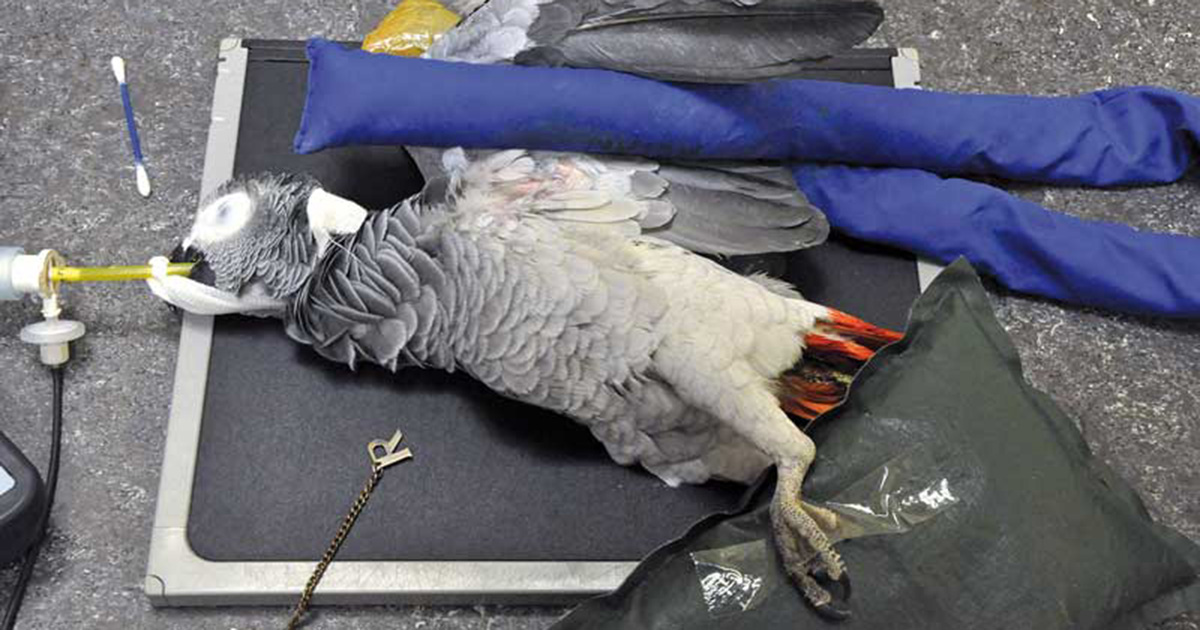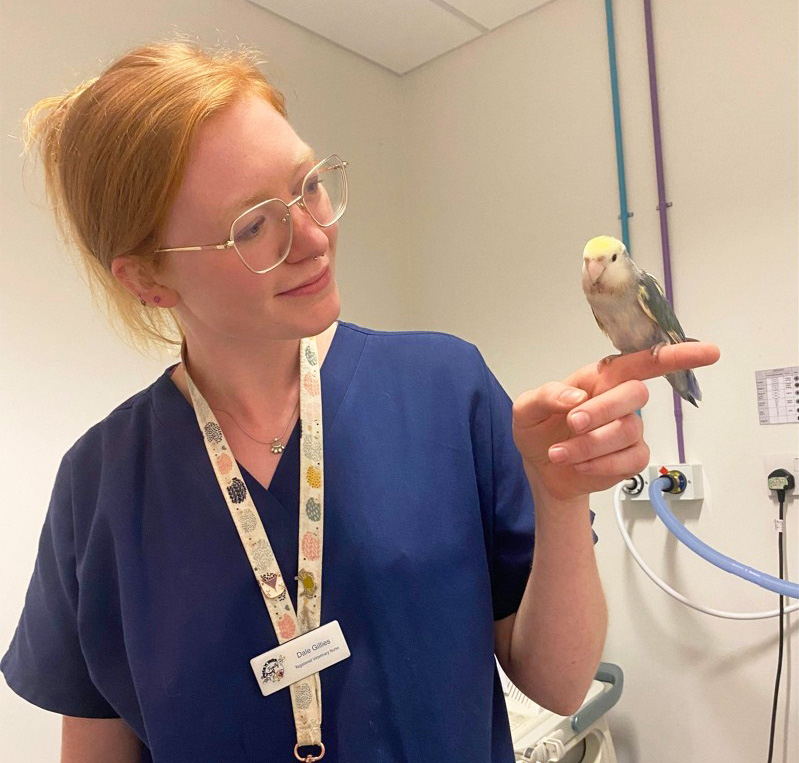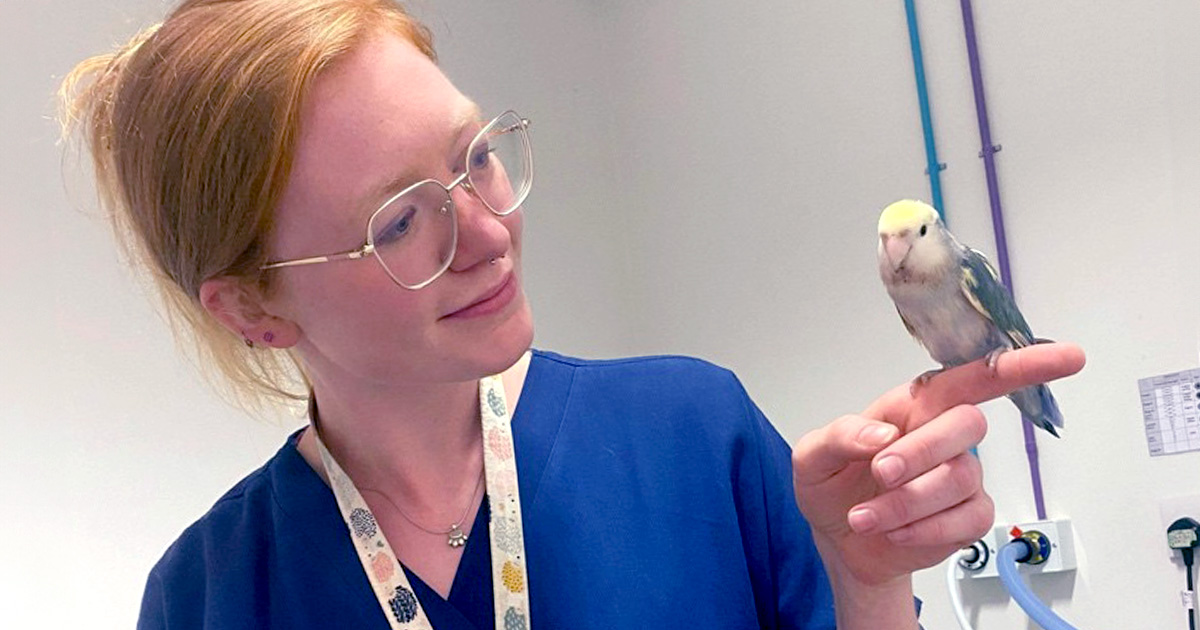Did you hear about the grumpy owl with an upset stomach? He had irritable owl syndrome…
Birds are a case of fight-or-flight (almost literally) for staff in the veterinary practice, especially when it comes to anaesthesia. Many will avoid due to a lack of experience, uncertainty, or a fear of the patient’s delicate nature, yet these patients are much more sturdy than they are believed to be.
I have personally completed an avian anaesthesia certificate and have had the opportunity to use these skills on several occasions – and I can honestly say that, with the correct preparation, there is nothing to squawk about.
Prepping for surgery
Pre-surgery planning is not much different from cats and dogs. Birds need to be fasted overnight to ensure an empty crop prior to surgery. The crop should be palpated before surgery and any residual food should be removed with a crop needle. Birds can wake up with a quick whip of the body after surgery, and a full crop can be aspirated, causing infection or death in recovery.
Pre-anaesthetic medication will differ in every practice, but I have achieved steadier anaesthetics and a gentler recovery when using a mix of torbugesic (for pain relief and slight sedation) and midazolam (as a sedative and muscle relaxant. It can also stimulate the appetite post-surgery). I try to avoid Ketamine because, although it provides a deep state of anaesthesia, it can be harsh on the body, causing respiratory depression and rigidity of muscles.
In a recent case, alongside two wildlife vets, tramadol liquid was given orally as a pain relief and slight sedation, which I found to work very nicely as a pre-anaesthetic medication. Doxopram should be calculated and to hand alongside the common emergency drugs, in the instance of apnoea or respiratory distress.

Tiny trachea
For any non-invasive procedures under 10 minutes, such as X-rays, taking blood or clinical exams (most common for raptors), gas via a sealed mask is suitable. For invasive or longer procedures, an endotracheal (ET) tube should be placed.
As with dogs, the size of the ET tube depends on the size of the bird. 2mm tubes are most commonly used, but 1mm tubes are available for tiny birds. If you have no ET tubes small enough, you can use feeding tubes with holes cut into them.
A bird’s trachea differs from that of domestic mammals in that the hyaline cartilage rings are complete, therefore the use of cuffed ET tubes is contraindicated as the trachea cannot expand, resulting in damage if attempted.
You may be thinking “how on earth do you intubate something so small?” – well, I personally find them one of the easiest animals to intubate. The pharynx (entrance to the trachea) is found right at the base of the tongue, and is open with a clear view for placement. The ET tube should be attached to the lower beak with a tie or a figure of eight with tape.
Care should be taken while handling the patient whilst the ET tube is in place as the trachea can be easily twisted. An interesting addition to this is penguins as they have a separation down their trachea (Median Tracheal Septum), making intubation even harder.
Air flow
As in many animals under anaesthesia, birds in dorsal recumbency have a lower respiratory rate due to the pressure of organs on the air sacs. This means intermittent positive pressure ventilation (IPPV) to encourage airflow and inhalation of the anaesthetic gas.
The avian respiratory system can cause apnoea if there is a high build-up of CO₂ (Edling TM, 2006). I have mainly seen this with certain positioning or high volatile gas flow, but it can be corrected with IPPV and both anticipated and maintained by ensuring a capnograph is attached. As stated previously, Doxopram can also be used if the anaesthetic is prolonged or the respiratory rate worsens.
There are several studies demonstrating suitable oxygen and volatile gas levels for anaesthetics, but I have never stuck to a specific one as every patient differs. I generally use anywhere between 500ml-2L/min of oxygen and 0.5-3% of isoflurane (other gases such as sevoflurane can also be used). This is purely based on my own experience and is not a textbook depiction, but varies depending on how invasive the procedure is, the size of the bird, the species, or the behaviour in general.
Not so hot
Similar to small furries, their tiny body mass means the temperature of avian patients can plummet quickly during preparation of the surgical site, therefore adequate heat sources should be used before the surgery starts, such as an incubator.
As in all patients, recovery is the most vital part of any anaesthetic, and an incubator should be used pre- and post-operatively for recovery.
Road to recovery
Once removed from the anaesthetic gas, avian patients should be monitored closely for return of the palpebral reflex – however the ET tube should NOT be removed once this alone returns. Gently manipulating the wings should encourage blood and oxygen flow through the body, and the ET tube should be removed once the bird starts to twitch and move their wings on their own.

In some of my cases, avian patients have woken up very quickly and tried to flap and fly instantly. This is relatively common as they will most likely be very disorientated, but preparing for this will prevent injury to both the bird and handler. I recommend placing a towel underneath the bird before turning off the anaesthetic gas, untying/untaping the ET tube (so it can be easily removed with one hand) and using one hand to hold the bird while the other checks the palpebral reflex, manipulates the wings, and can pull the tube once ready. The hand holding should grip the bird through the towel, using the index and middle fingers to support either side of the head, and the rest of the hand to support the back and cradle the wings.
Once awake, the bird should only be left in the incubator once it is able to perch. This perch should be nearly on the ground to prevent falling from a height, but enough for the patient to suitably perch.
No need to be scared
Avian anaesthesia may sound like a terrifying endeavour, but with the correct preparation and knowledge, there is no reason to avoid them. As long as there is communication between the vet and nurse carrying out the procedure, both anaesthetic and recovery should be smooth.
The main points I’d say to keep an eye on are ventilation, temperature and recovery of the patient.

Leave a Reply